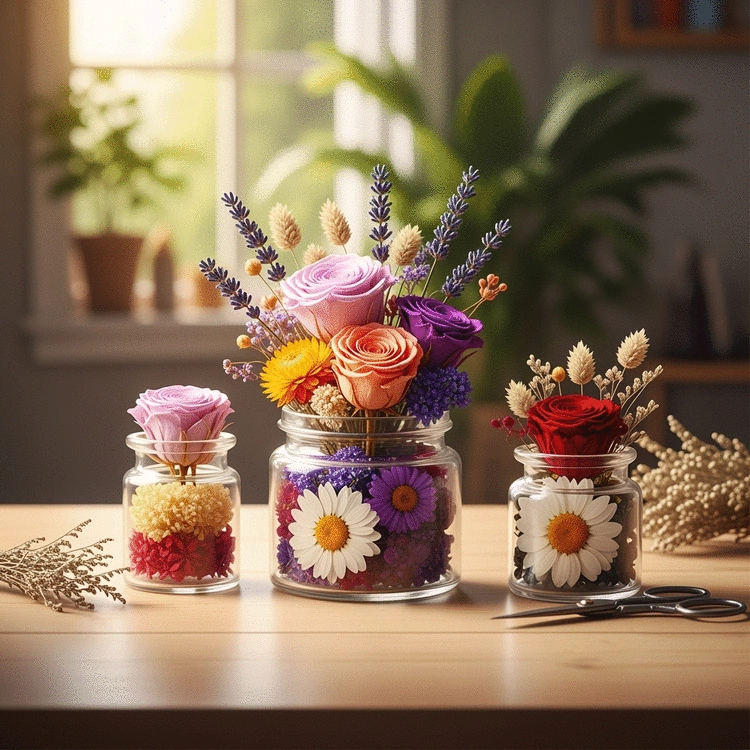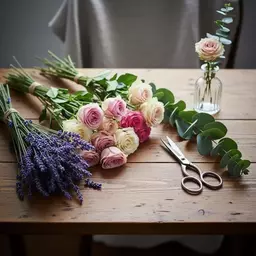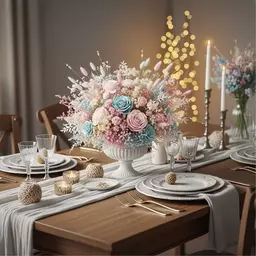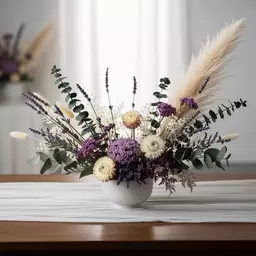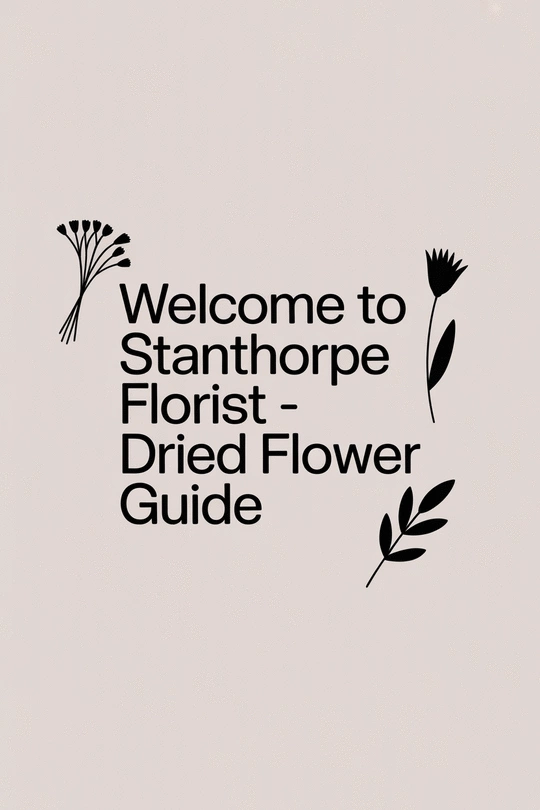What if every flower you cherished could tell a story of sustainability? The journey through sustainable flower preservation not only enhances our floral artistry but also contributes to a healthier planet. Discover the vital techniques that honor nature while extending the life of your blooms.
What You Will Learn
- Sustainable flower preservation reduces waste and supports local agriculture while promoting eco-conscious living.
- Adopting eco-friendly practices, such as sourcing local flowers and using organic materials, enhances floral designs and aligns with sustainability goals.
- Maintaining low humidity and optimal temperature conditions is essential for the long-term beauty of preserved flowers.
- Exploring biodegradable and compostable materials not only benefits the environment but also elevates the aesthetic of your floral arrangements.
- Understanding the costs and environmental impacts of various preservation methods helps in making informed, sustainable choices.
- Engaging with local sustainable florists and participating in community events can amplify your impact and create a culture of eco-consciousness.
Comparative Analysis of Flower Preservation Methods
Understanding costs and environmental impacts helps in choosing the right preservation technique for sustainable floristry.
Cost Comparison
- Air Drying: Low cost, but a longer time to achieve desired results.
- Silica Gel Drying: Moderate cost and effective.
- Freeze Drying: Higher investment, often best for professionals.
Environmental Impact Assessment
- Air Drying: Minimal energy use, environmentally friendly.
- Oven Drying: High energy consumption, quick results.
- Microwave Drying: Fast, but moisture issues if unsupervised.
- Silica Gel: Sustainable when reused, sourcing impacts environment.
Understanding Sustainable Flower Preservation Techniques
As I journey through the world of floral artistry with Stanthorpe Florist, I continuously discover the beauty of sustainable flower preservation. This is not just a trend; it’s a commitment to preserving nature’s exquisite creations while being kind to our environment. Understanding these techniques is essential, as they not only extend the life of flowers but also contribute to a healthier planet.
So, what exactly is sustainable flower preservation? In essence, it's about using methods that reduce waste and environmental impact. With practices that align with eco-friendly values, we can enjoy preserved flowers while honoring the natural world. Isn’t it wonderful to think that every dried bloom can tell a story of sustainability?
Defining Sustainable Flower Preservation and Its Importance
Sustainable flower preservation focuses on environmentally friendly methods that allow us to cherish flowers for longer. This practice is crucial for several reasons: it decreases waste, supports local agriculture, and promotes eco-conscious living. By choosing sustainable options, we can elevate our floral designs while making a lasting impact on our planet.
Moreover, sustainable flower preservation fosters a sense of community among floral designers and enthusiasts. Through shared knowledge and practices, we can inspire one another to create arrangements that not only look beautiful but also reflect a commitment to the environment. Are you ready to join this green movement with me? The U.S. Environmental Protection Agency (EPA) offers excellent resources on the broader concept of sustainability.
The Role of Eco-Friendly Practices in Floristry
In floristry, adopting eco-friendly practices is becoming more essential than ever. By integrating sustainable techniques, we can create stunning arrangements that celebrate the beauty of nature without compromising our planet. Here are a few key practices to consider:
- Using local flowers: Sourcing blooms from nearby farms reduces carbon emissions related to transportation.
- Choosing organic materials: Opting for flowers grown without harmful chemicals promotes a healthier ecosystem.
- Implementing waste-reducing methods: Techniques like composting and recycling materials can minimize waste in our floral work.
As I work on my projects at Stanthorpe Florist, I find that these practices not only enhance the beauty of each arrangement but also allow me to align my passion for floral design with my commitment to sustainability. What eco-friendly practices do you embrace in your floral endeavors?
Exploring Various Methods for Preserving Flowers Sustainably
Now that we understand the significance of sustainable flower preservation, let’s dive into the various methods to achieve it. There are several exciting ways to preserve flowers, ensuring they retain their beauty for years to come. By experimenting with different techniques, we can find the ones that resonate with our personal styles and sustainability goals!
Each method brings its own unique charm and character to dried flowers. Whether you prefer a simple air drying technique or the precision of freeze drying, there’s a sustainable solution waiting for you. Let’s explore these methods together!
Pro Tip
Did you know? When preserving flowers, using natural essential oils can enhance their fragrance while providing a protective layer against environmental factors. Try adding a few drops of lavender or eucalyptus oil to your preservation process for a delightful scent and added longevity!
Addressing Long-Term Storage and Maintenance of Preserved Flowers
When it comes to preserving flowers, maintaining their beauty over time can be a bit of a puzzle. Understanding the right humidity and temperature control is essential for ensuring your dried blooms last for years. As a florist and a lover of sustainability, I often think about how we can create lasting beauty without compromising our eco-friendly values.
Here are some key factors to consider for optimal long-term storage:
- Humidity Levels: Keep your flowers in a low-humidity environment to prevent mold and deterioration.
- Temperature: Store your arrangements in a cool, dry place, ideally away from direct sunlight.
- Ventilation: Ensure good airflow around your preserved flowers to prevent moisture buildup.
While we all want our dried flowers to last, there are also some common myths that can lead us astray. For example, many believe that placing flowers in a sealed container will keep them fresh longer. In reality, lack of air can trap moisture and lead to unwanted issues! So, let’s embrace what we know to keep our floral treasures vibrant.
Understanding Humidity and Temperature Control
Maintaining the right conditions is not just about storing flowers; it's about prolonging their life and ensuring they bring joy for as long as possible. The ideal humidity level for dried flowers is typically around 30-40%. This balance helps prevent any unwanted moisture from settling in. Monitoring these levels might seem tricky, but it’s worth the effort!
Here’s a quick overview of ideal storage conditions:
- Temperature: 60-70°F (15-21°C) is perfect for most dried flowers.
- Humidity: 30-40% relative humidity will ensure flowers don’t absorb moisture.
- Light: Avoid direct sunlight; it can fade colors over time.
Remember, understanding these details can help you enjoy your beautiful arrangements longer. Have you ever wondered if your storage method is working effectively? Let’s keep those lovely preserved blooms flourishing!
Biodegradable and Compostable Materials for Preservation
As we continue to embrace sustainable practices, exploring biodegradable and compostable materials for flower preservation becomes essential. My journey with dried flowers at Stanthorpe Florist has made me appreciate the little changes that can have a big impact. Using eco-friendly materials not only benefits the environment but enhances the beauty of our arrangements, too.
Here are some alternatives to consider when preserving flowers:
- Natural Dyes: Use plant-based dyes for a vibrant touch!
- Compostable Wrappings: Look for paper or fabric that breaks down easily.
- Biodegradable Adhesives: Choose glues that won’t harm the environment.
These options ensure that your floral creations are not only beautiful but also kind to the planet. Plus, they are a wonderful conversation starter at any gathering! Wouldn’t it be lovely to share the story behind your eco-friendly choices?
Comparative Analysis of Preservation Methods
When choosing the right preservation method, a little comparative analysis can go a long way! Understanding the costs and benefits of different techniques can help you make informed decisions, especially if you're passionate about sustainability like I am. Let's dive into the various preservation methods available to us.
Cost Comparison of Different Preservation Techniques
While some methods of preservation may be more expensive than others, it's essential to weigh the benefits against the costs. For instance, some techniques can be done at home with minimal investment, while others might require professional assistance. Here are some key points to consider:
- Air Drying: Low cost, but may take longer to achieve desired results.
- Silica Gel Drying: Moderate cost for materials, but very effective.
- Freeze Drying: Higher initial investment, often best for professionals.
Thinking about these factors can help you choose the right method that fits your budget and floral needs! You can still achieve amazing results whether you are looking for a DIY project or professional services.
Environmental Impact Assessment of Flower Preservation Methods
Every choice we make can have environmental consequences, even in the world of floristry. Analyzing the carbon footprint of various preservation methods can guide us in making more sustainable choices. Here are some points to consider:
- Air Drying: Minimal energy use, environmentally friendly.
- Oven Drying: High energy consumption but quick results.
- Microwave Drying: Fast, but can lead to moisture issues if not monitored.
- Silica Gel: Sustainable choice when reused, but sourcing can impact the environment.
By being mindful of our choices, we can enjoy the beauty of preserved flowers while also caring for our planet. What steps do you take to ensure your floral practices are sustainable?
Frequently Asked Questions About Sustainable Flower Preservation
- Q: What is sustainable flower preservation?
- A: Sustainable flower preservation involves using environmentally friendly methods to extend the life of fresh flowers, reducing waste, supporting local agriculture, and promoting eco-conscious living.
- Q: Why is sustainable flower preservation important?
- A: It's crucial because it minimizes environmental impact, decreases waste, supports local economies, and allows us to enjoy the beauty of flowers for longer while being kind to the planet.
- Q: What are some eco-friendly practices in floristry?
- A: Key practices include sourcing local flowers to reduce carbon emissions, choosing organic materials grown without harmful chemicals, and implementing waste-reducing methods like composting and recycling.
- Q: How can humidity and temperature affect preserved flowers?
- A: Maintaining low humidity (30-40%) and optimal temperatures (60-70°F or 15-21°C) is essential to prevent mold, deterioration, and fading, ensuring the longevity and beauty of preserved flowers.
- Q: What biodegradable materials can be used for flower preservation?
- A: Biodegradable options include natural dyes, compostable wrappings (paper or fabric), and biodegradable adhesives, all of which reduce environmental impact.
- Q: Which preservation method is most environmentally friendly?
- A: Air drying is generally the most environmentally friendly method due to its minimal energy consumption. Silica gel is also sustainable when reused, though its initial sourcing has an environmental impact.
- Q: How can I engage with the sustainable floristry community?
- A: You can engage by researching and supporting local florists who prioritize sustainability, attending workshops on eco-friendly floral design, and participating in local markets or sustainability fairs.
Encouraging Sustainable Choices and Community Engagement
As a community, it's vital to share our knowledge and inspire one another to adopt sustainable practices in floral preservation. Engaging others in this journey creates a ripple effect, fostering a culture of eco-consciousness. There are many wonderful ways to get involved and make a difference!
DIY Sustainable Flower Preservation Projects to Try
Creating your own projects not only allows you to express your creativity, but it also helps spread awareness about sustainable practices. Here are some fun ideas to inspire your next DIY adventure:
- Pressed Flower Bookmarks: Combine beauty with utility!
- Floral Wreaths: Use seasonal blooms for a festive touch.
- Decorative Jars: Fill them with dried flowers for unique gifts.
These projects are a fantastic way to enjoy the beauty of dried flowers while celebrating their sustainability. Have you tried any DIY projects with dried flowers yet?
Engaging with Local Sustainable Florists and Resources
Connecting with local florists who share your passion for sustainability can be a game changer! Seeking out eco-conscious floral designers not only supports small businesses but also enriches your floral experience. Here are some tips to get started:
- Research Local Florists: Look for those who prioritize sustainability and eco-friendly practices.
- Attend Workshops: Many florists offer classes on sustainable floral design.
- Join Community Events: Participate in local markets or sustainability fairs.
By engaging with others in your community, we can amplify our impact and create a vibrant culture around sustainable floristry. For additional insights into floriculture and its sustainable practices, consider exploring resources from academic institutions like Cornell University's Floriculture program, which offers extensive research and extension services. What local resources have you discovered on your journey?
Summarizing Sustainable Practices in Flower Preservation
In conclusion, understanding and embracing sustainable practices in floral preservation is vital for our planet and our enjoyment of nature's beauty. As we explore various techniques and methods, let’s remember the significance of making environmentally friendly choices. Together, we can create a future where preserved flowers are celebrated not just for their beauty, but also for their sustainability!
Now is the time for all of us to take action. Let’s adopt eco-friendly flower preservation techniques together! What small step will you take today to make a difference in our floral world?
Recap of Key Points
Here is a quick recap of the important points discussed in the article:
- Sustainable flower preservation is crucial for reducing waste and supporting local agriculture.
- Eco-friendly practices in floristry include using local flowers, choosing organic materials, and implementing waste-reducing methods.
- Maintaining proper humidity and temperature is essential for the long-term storage of preserved flowers.
- Utilizing biodegradable and compostable materials enhances both the beauty and sustainability of floral arrangements.
- Engaging with local sustainable florists and participating in community events can foster a culture of eco-consciousness.
- DIY projects such as pressed flower bookmarks and floral wreaths are great ways to express creativity and promote sustainability.
